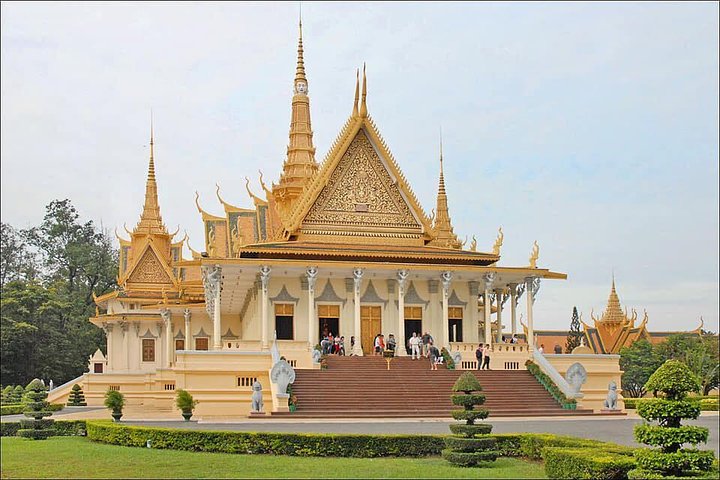Dancing Through Time: A Journey into Cambodia’s Cultural Heart
Drawn by the allure of Cambodian traditional dance, I embarked on a journey to Phnom Penh to explore its cultural significance. The experience promised a deep dive into the art form’s history and meaning, and it did not disappoint.
A Cultural Tapestry Unveiled
Arriving in Phnom Penh, the vibrant capital of Cambodia, I was immediately struck by the city’s unique blend of tradition and modernity. As someone who has spent years exploring the rich cultural landscapes of Asia, I was particularly drawn to the opportunity to delve into the world of Cambodian traditional dance. The Cambodia Traditional Dancing Workshop promised not only a chance to learn the intricate movements but also to understand the cultural significance behind them.
The workshop began at the National Museum, a fitting venue that houses some of Cambodia’s most treasured artifacts. Our guide, a knowledgeable and passionate local, introduced us to the history and evolution of Cambodian dance. The anticipation built as we made our way to the dance studio, where the professional trainer awaited us. The room was filled with an air of reverence, as if the spirits of past dancers lingered in the space, ready to share their secrets.
The Dance of Grace and History
The workshop itself was a mesmerizing experience. Our trainer, a master of the art, guided us through the basic steps of the Apsara dance, a classical form that dates back to the Angkorian era. Each movement was deliberate and graceful, embodying the elegance and poise that the dance is renowned for. As we practiced, the trainer shared stories of the dance’s origins, its role in royal ceremonies, and its symbolic meanings.
I found myself deeply immersed in the rhythm and flow, each step a connection to the past. The dance was not just a series of movements but a narrative, a way to communicate stories and emotions that transcended language. It was a reminder of the power of art to bridge cultures and time, a theme that resonates deeply with my own experiences growing up in a multicultural household.
A Feast for the Senses
After the workshop, we were treated to a delightful dinner at Friend Restaurant, one of Phnom Penh’s most beloved dining spots. The restaurant, known for its vibrant atmosphere and delicious cuisine, was the perfect place to reflect on the day’s experiences. As we savored the flavors of traditional Cambodian dishes, the conversation flowed, filled with newfound appreciation for the culture we had just explored.
The evening culminated in a breathtaking performance of the Apsara dance by professional dancers. Watching them, I was reminded of the grace and beauty that I had attempted to emulate earlier in the day. The dancers moved with a fluidity and precision that was awe-inspiring, their expressions conveying a depth of emotion that words could not capture.
This journey into the heart of Cambodian culture was a profound reminder of the richness and diversity that Asia has to offer. It was an experience that not only deepened my understanding of Cambodian traditions but also reinforced my belief in the importance of cultural exchange and preservation. As I left Phnom Penh, I carried with me not just memories of a beautiful dance but a renewed sense of connection to the cultural tapestry of Asia.







































